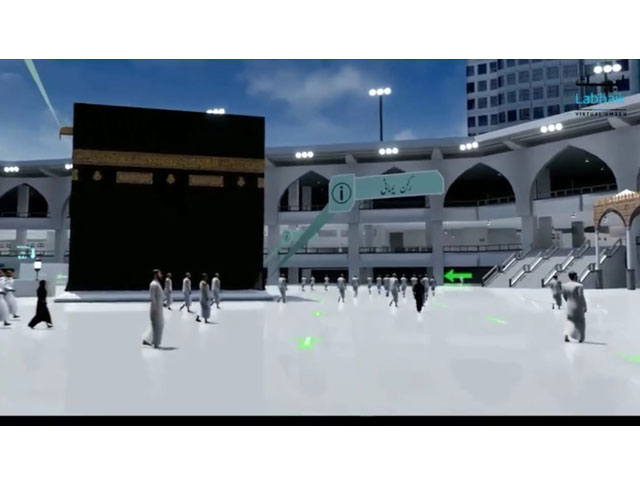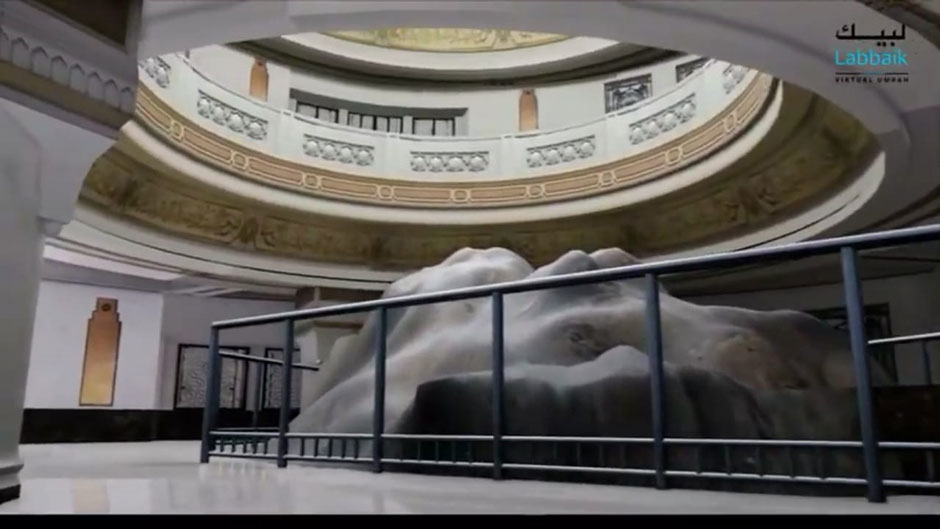
Using virtual reality technology, a startup in Pakistan has prepared a simulator application to train would-be Hajj pilgrims.
The application, Labbaik VR, will not only offer guidance on Hajj rites but provide users with a background of the sacred sites as well. It will also offer a real-time tracking facility to Hajj pilgrims to facilitate movement between sacred sites and help them reconnect with their group.
Virtual reality helping children fight fear of medical treatment
“Our app is aimed at reducing the problems Hajj pilgrims are known to face,” said Shehriar Ashraf, the CEO of the company that has launched the app. “We hope to train them in a virtual environment that very closely resembles the actual sacred sites in Makkah so that when they go on the actual Hajj, they can perform the rites with ease and safety,” he said.
“We also hope to provide a spiritual connection with the sacred sites to those who wish to perform Hajj but are unable to do so for any number of reasons,” Ashraf added. “Our app can also be used for virtual tourism.”

Ashraf’s company is not new to initiatives aimed at training and guiding Hajj pilgrims. For the past seven years, it has been using 2D technology towards this end. According to him, they trained as many as 30,000 Hajj pilgrims in 2016 alone.
“Three years back, we decided to come up with a virtual reality solution to train Hajj pilgrims. Now, for the first time, we will train 5,000 pilgrims using our simulator app,” Ashraf said. “We have completed talks with the religious affairs ministry for this pilot project and expect to inaugurate it next month.”
“We will also provide dongles containing the app to private Hajj organisers so they can train pilgrims they are taking on Hajj as well,” he added.
A virtual Makkah
According to Ashraf, in preparing the app, his company has tried to make as realistic a depiction of the sacred sites of the Hajj as possible.
“We have really tried to be accurate down to a centimetre to give users the most authentic virtual experience possible,” he said. “Our blueprints for virtual reconstruction of the sacred sites were drawn up with the help of experts who obtained their actual measurements. We also used a number of photos of the sites.”
“To take measurements of the Holy Ka’aba and the Haram, we used between 75,000 and 85,000 high definition photographs. Thousands more pictures were used for the depiction of the rites of Hajj,” he added.
Virtual reality resurrects ancient Rome bit by bit
According to Ashraf, Labbaik VR has been designed as a multigadget app. Within six to eight months, it will be available on Google Cardboard and be able to provide Hajj training in all languages spoken in Pakistan, he said.
Providing details on the training it provides, Ashraf said the app teaches pilgrims everything from how to tie the ihram and what prayers to recite during this act to the immigration process at the airport and precautions to take during the flight.
“We hope our app will provide such effective training that Saudi authorities will start seeing Pakistani pilgrims as the best trained,” he said. “We also believe our app can be of use to Saudi Hajj authorities and volunteers in cases of emergency.”
Video Producer: Sitara Arshad
Published in The Express Tribune, May 24th, 2019.
Follow us on Twitter and Facebook to get updates on the latest news, gadgets and trends.






1732347751-0/Express-Tribune-(1)1732347751-0-270x192.webp)


1732264554-0/Copy-of-Untitled-(68)1732264554-0-270x192.webp)







COMMENTS (1)
Comments are moderated and generally will be posted if they are on-topic and not abusive.
For more information, please see our Comments FAQ